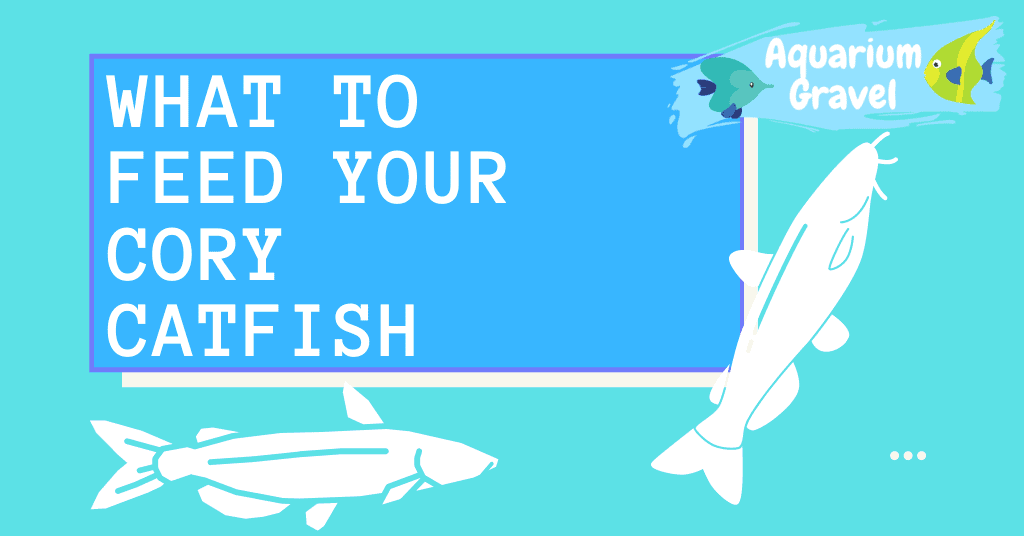Last Updated on July 13, 2021 by cmoarz
If you’ve just picked up some cory catfish and now need to know what to feed them, you’ve come to the right place.
In this article, You will learn:
- Everything a cory catfish needs in its diet
- What these bottom of the tank fish like to eat the most
- How to provide your cory catfish with a balanced diet
What to feed cory catfish
Table of Contents
Cory catfish (corydoras) can be fed a wide variety of food. As omnivores, They will enjoy many types of food such as freeze-dried insects, frozen bloodworms, tubifex worms, Brine shrimp, and other high-quality foods like sinking pellets. They are not picky eaters.
The list goes on:
- brine shrimp
- freeze-dried or frozen bloodworms
- Tubifex Worms
- Bottom feeder tablets
- Algae
- Fish flakes
- Sinking pellets
- Shrimp food
- Snails food
- Sinking wafers
- Vegetables
- Plant-based foods
- plants
- And just about any uneaten food left over that bottom-feeding fish will typically eat.
Indeed, these bottom dwellers are not picky eaters, and in general, will eat anything. As long as you are giving them a balanced diet mostly designed for the cory catfish diet specifications, and the food is high quality, your fish will live long happy lives.
Something to keep in mind when feeding your cory cats snail foods or shrimp pellets, or any sinking pellet, is that these tend to be on the harder side until they have a chance to soak up some water.
Cory catfish don’t have strong jaws or strong teeth and may find it hard to break these sinking pellet types apart or just eat them in general until they’ve had time to soften up.
Usually, they come in a much smaller sinkable pellet compared to shrimp pellets, they are rounded and much easier for the cory to take into his mouth. This would be the best food for corydoras catfish.
If you have snails or anything else in your tank, It could pose a problem as snails will tend to eat the food before the cory’s have a chance. Cory catfish may starve to death if this keeps up without you taking notice.
Unfortunately, this is a fairly common problem.
So keep an eye out for that, and buy some commercially available pellets specifically designed for the cory catfish diet.
Another suspect of this is bigger faster fish not leaving any food droppings, or fat aquarium tank currents blowing food away from the corydoras catfish before they have a chance to get it.
It’s an easy fix, just keep an eye out for them.
One word of caution, though – it’s not wise to give them human food that may have any traces of salt. Too much salt can be fatal for your fish and will ultimately kill them. Salt is defiantly not part of a well-rounded bottom-feeder diet.
Regardless, with a little ingenuity, you’ll find plenty of potential foods that will be enjoyed by these scavenging bottom-feeders. And you’ll never run out of options given their wide diet preferences.
Cory cats (corydoras) are one of the most popular aquarium fish available in pet stores today. Next time you visit an aquarium or pet store, take a closer look at these guys; Once you do, I’m sure you’ll fall in love with cory catfish too! These attractive scavengers come in many different varieties, so there should be at least one species for every aquarist.
Can cory catfish eat algae?
I wanted to talk about this one specifically, as it’s a common question and also a misconception. People think corydoras catfish can survive solely feeding off the algae growing on the side of the aquarium tank.
This is simply untrue.
Cory catfish eat algae, yes, But you also need to supplement their diet just like any other bottom feeder. You can do this with many forms of plants, bottom-feeder fish pellets, algae wafers, freeze-dried worms, etc. Cory catfish need a balanced diet and supplemental feeding to stay healthy and thrive.
And also remember, these fish swim in schools as a community, so be sure to add enough for all of them and any other fish in the aquarium tank.
How often should Cory catfish be fed?
Try not to overfeed your corys, however, they tend to be quiet the overindulgers. I tend to feed them twice a day, once in the morning and once in the evening. This ensures they have all the food they need and that none of them are starving due to other inhabitants in the tank scooping it up.
About
Owner of AquariumGravel.com and also owner of actual Aquarium Gravel believe it or not! ;). Setting up beautiful aquarium sceneries and habitats since I was very young. Enjoy!
- Web |
- More Posts(290)

